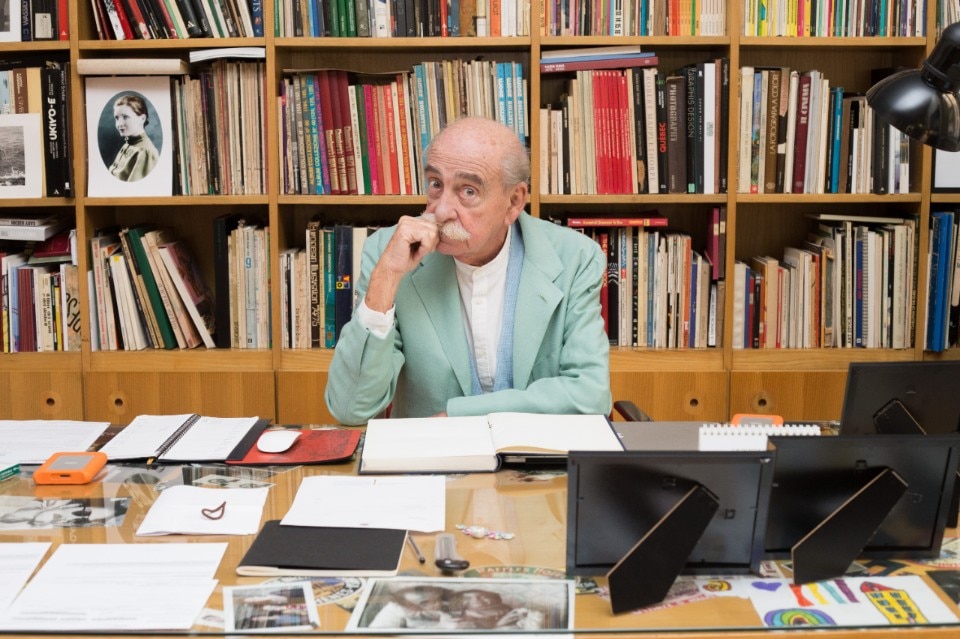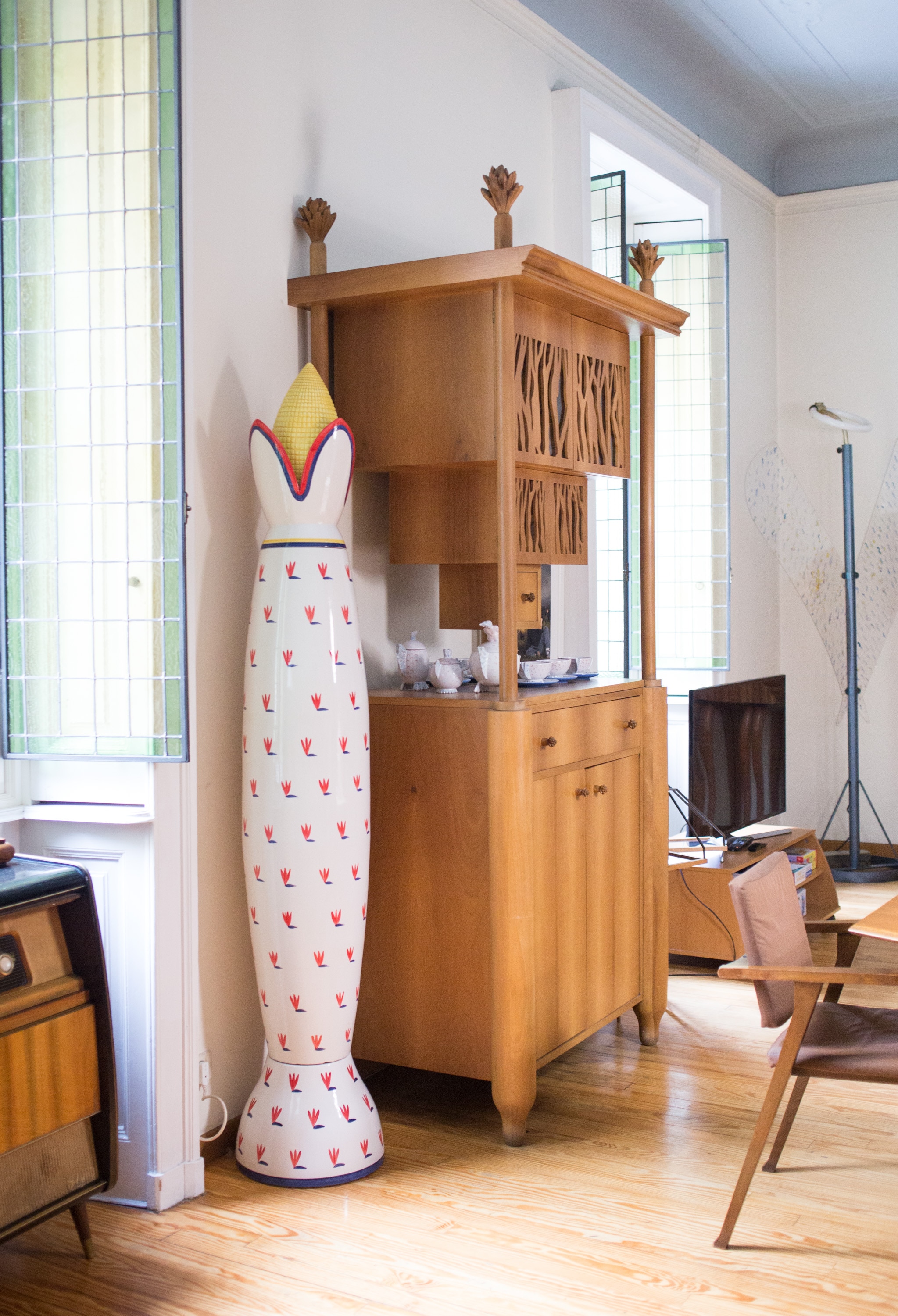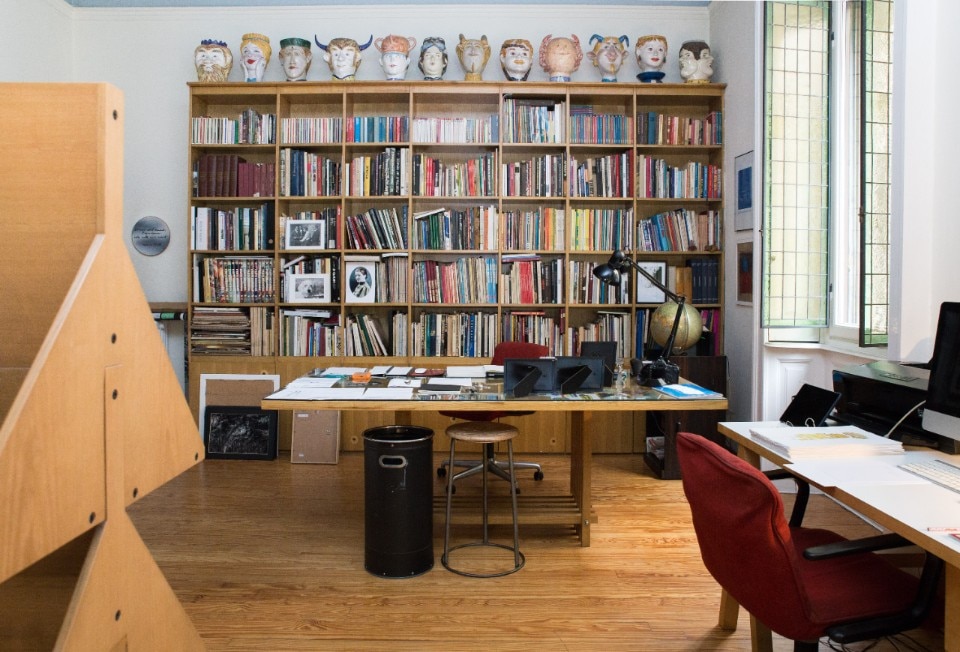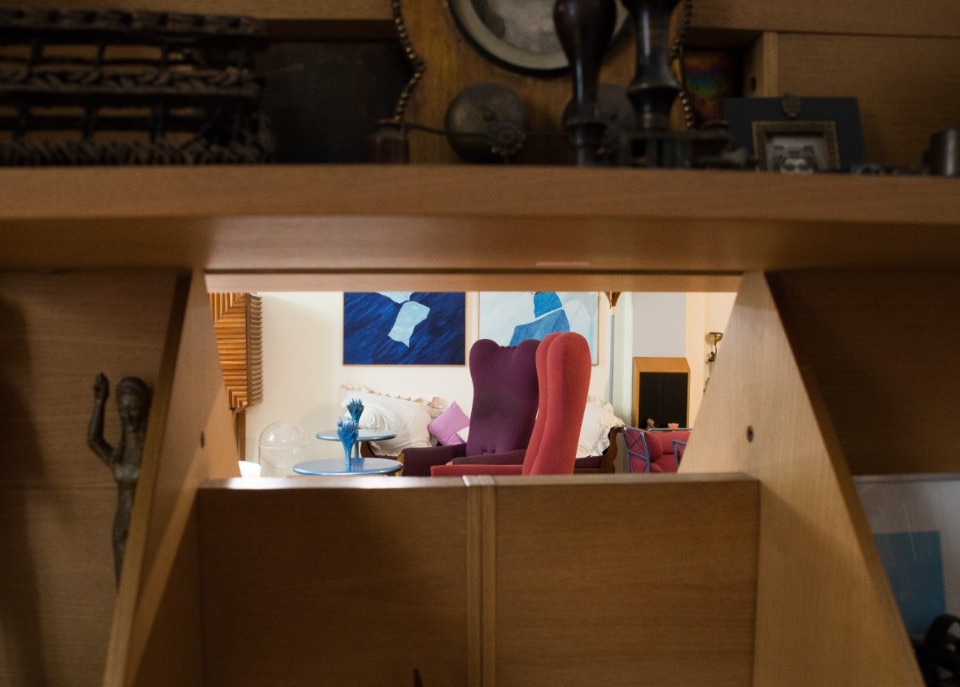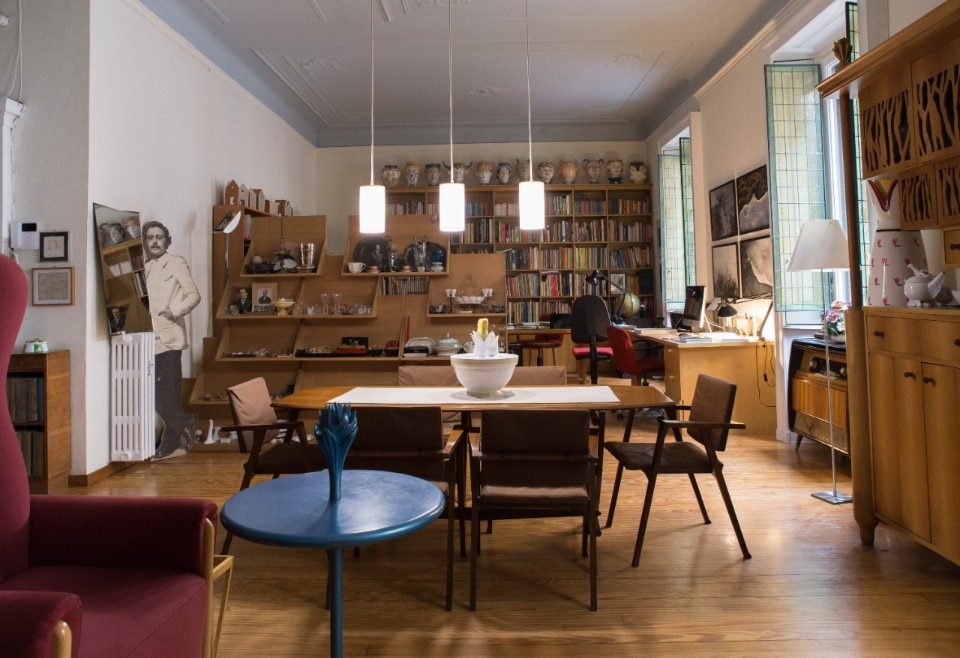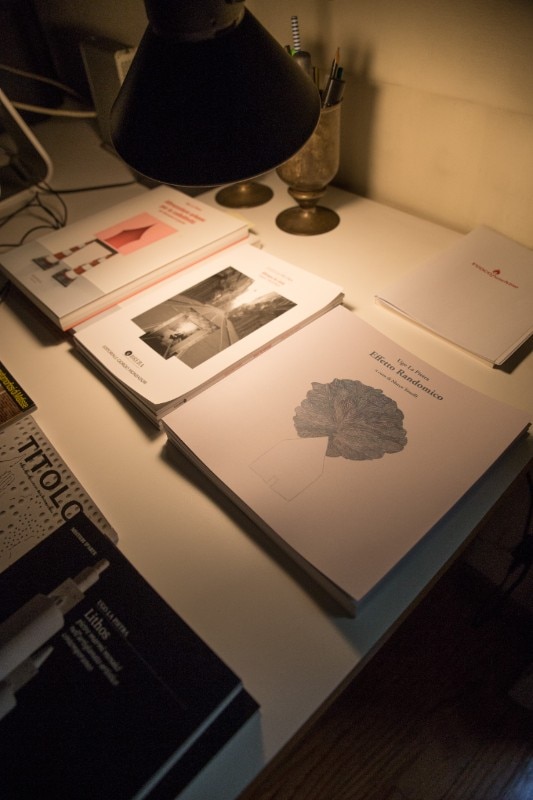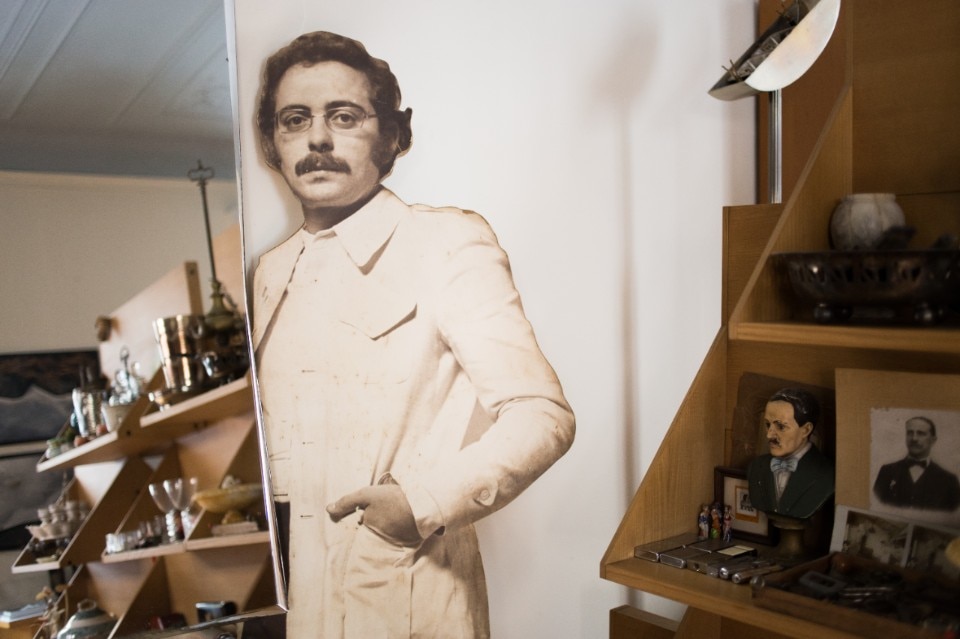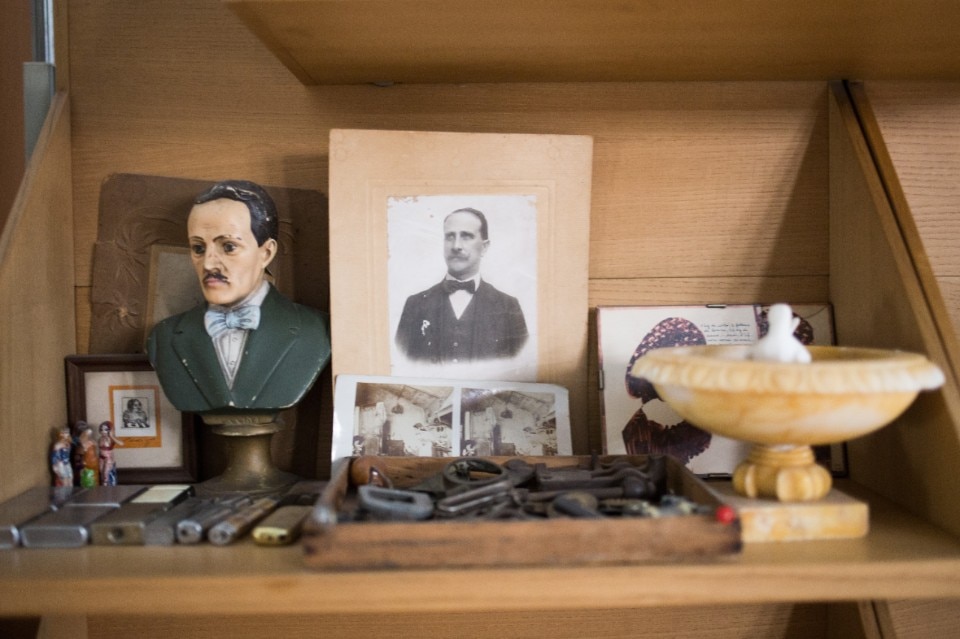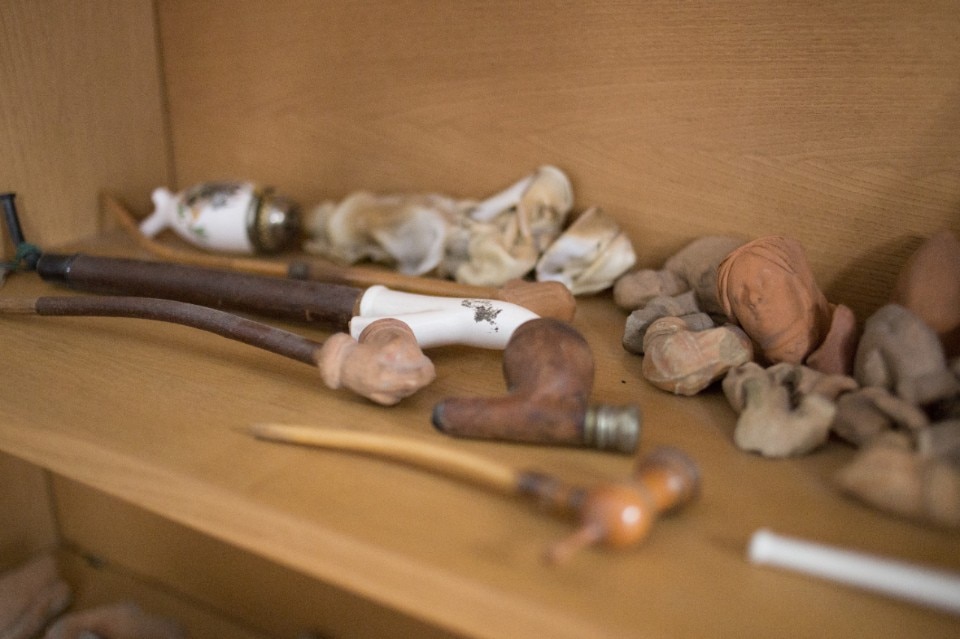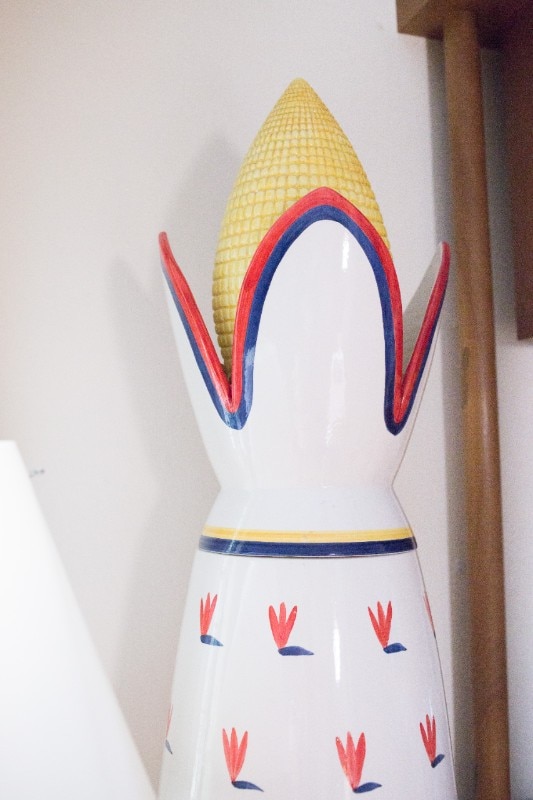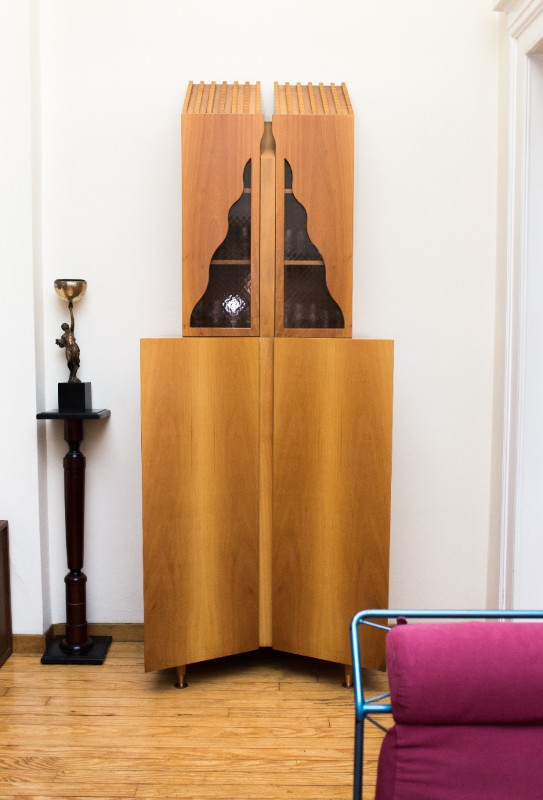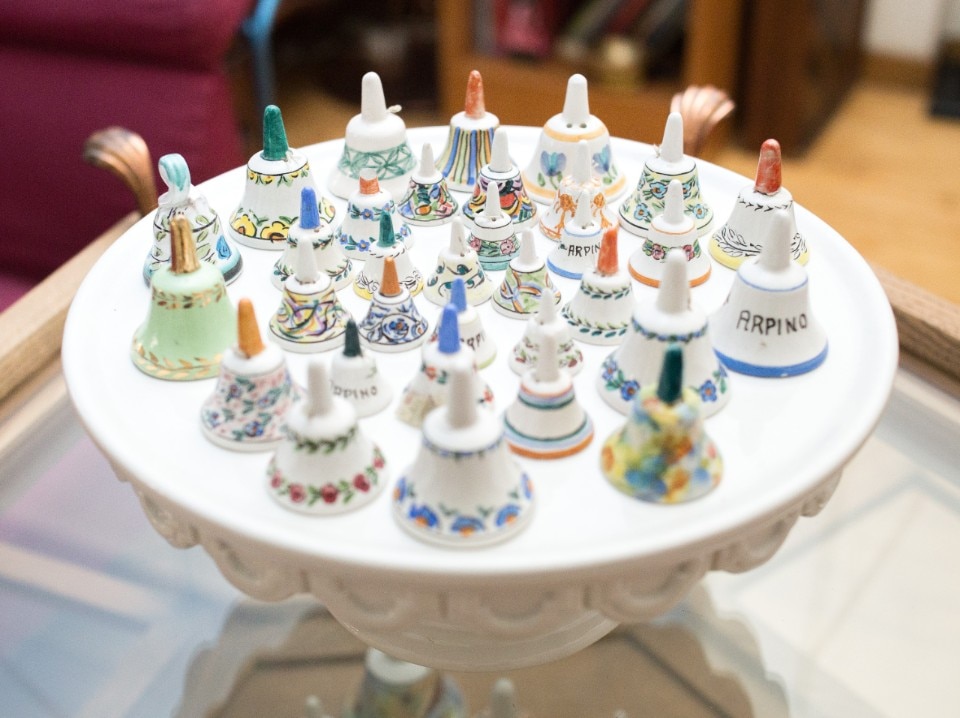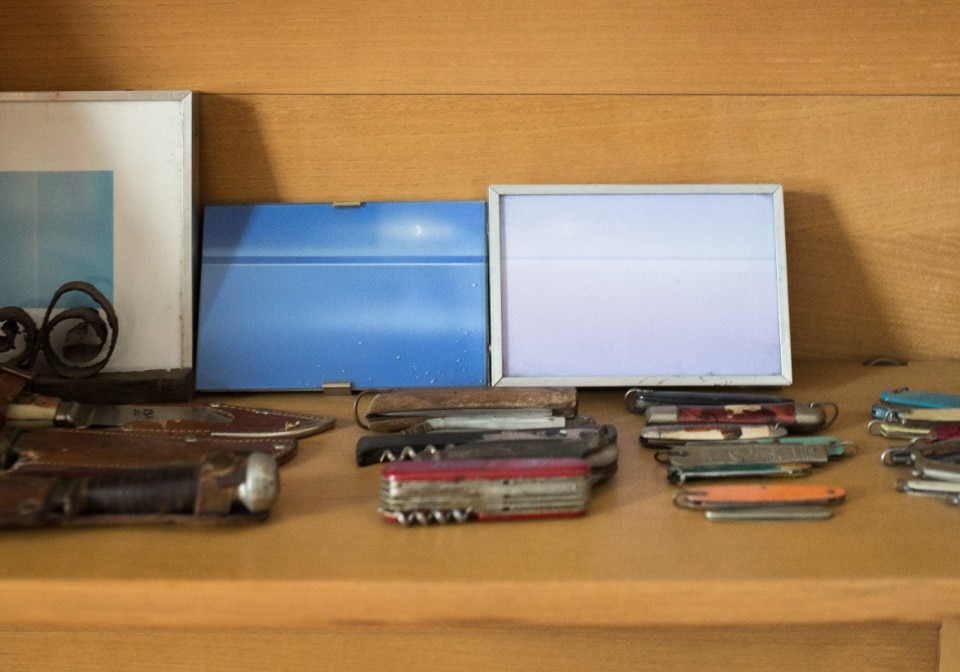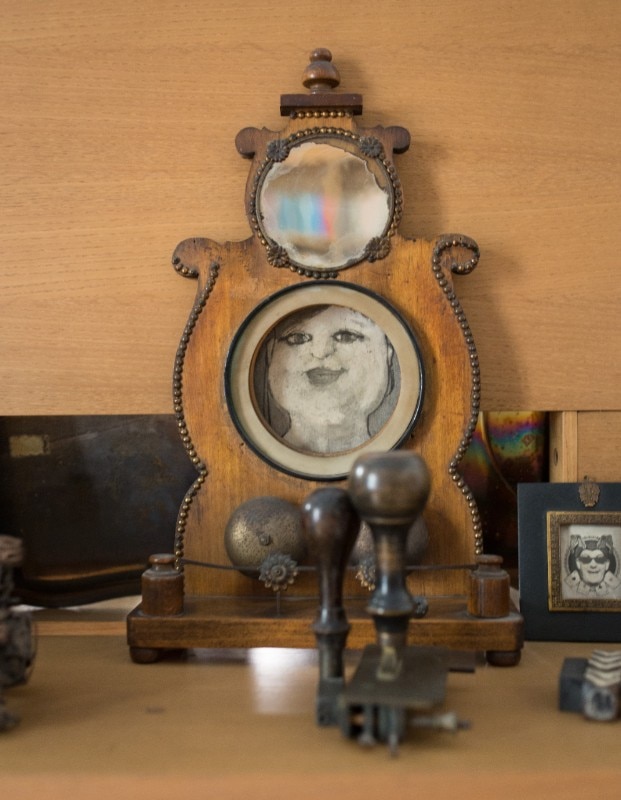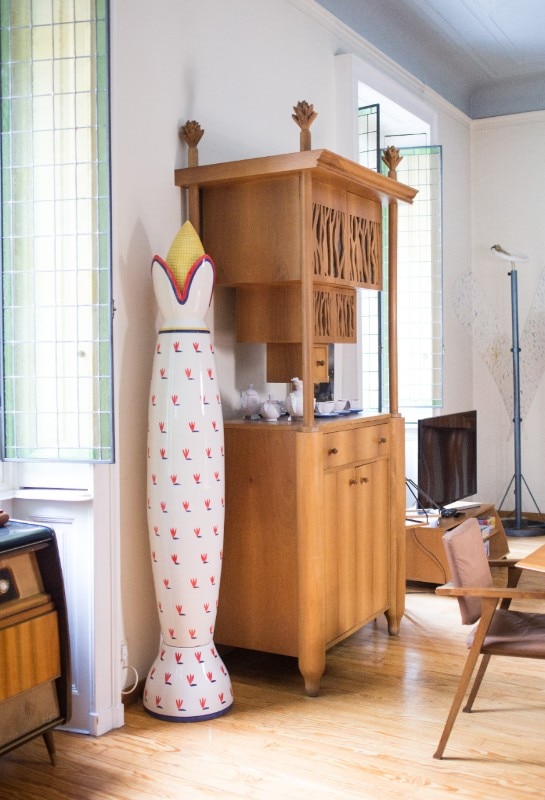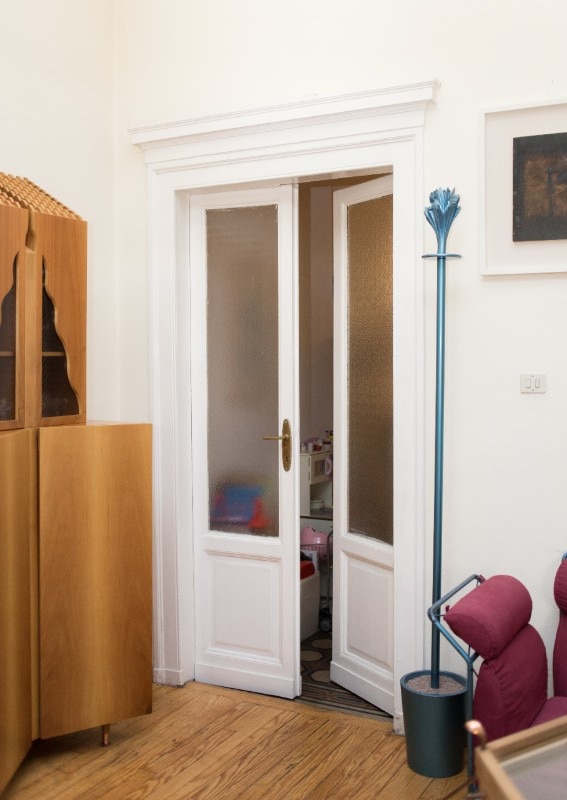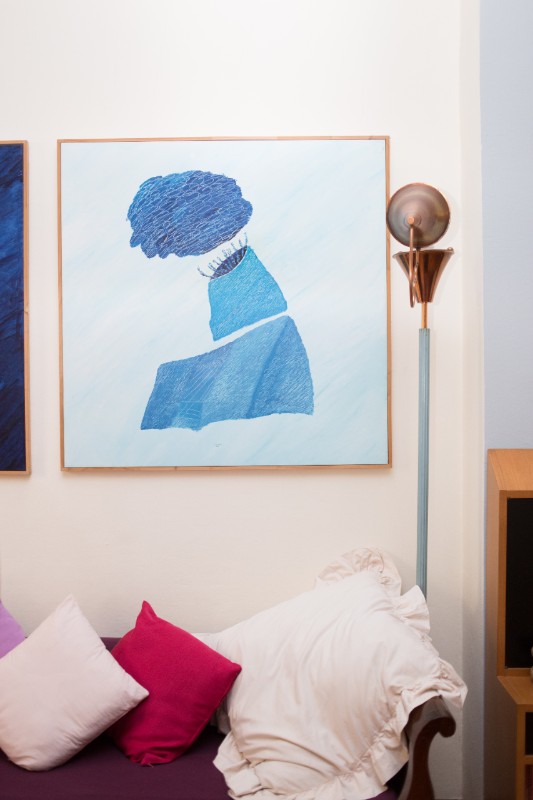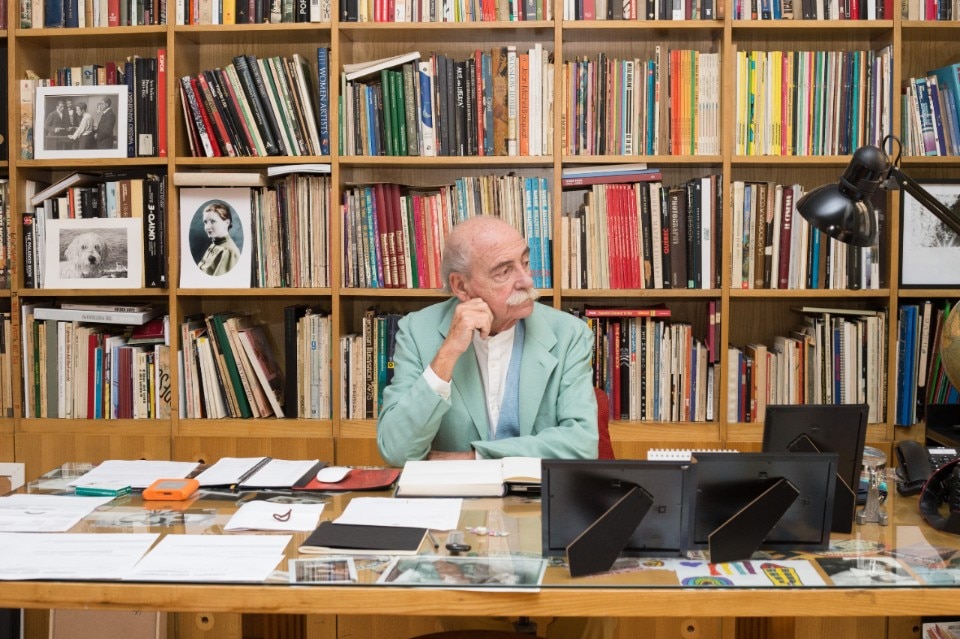Entering Ugo La Pietra’s home feels like stepping into the heart of a subject that is at once intimate and universal: the concept of home.
“In our homes, we think we are in a domain where we are free – a space of our own. But in reality, it’s not as simple”, says La Pietra, referencing one of his earliest artistic projects focusing on domestic life, a book titled “L’uso dell’oggetto”, and published in 1970. “Eugenio Battisti, a great art historian, told me it was one of the most beautiful studies since the works of Surrealists”.
In this sociological investigation, La Pietra captured the living spaces of several people, asking about their jobs and the objects they desired to have within the confines of their four walls. “He discovered that each person didn’t fill their homes with what they truly desired but rather with what consumer society dictated – a form of false freedom”.
This brings us to a larger question about the role of design and art in creating environments and objects that authentically reflect human desires and needs, free from the influences of consumer culture.
We live a crowded loneliness. In Milan, 40 percent of the population is single; they spend their time outdoors and do so in a playful manner. However, the playful city does not exist. It was never constructed, nor was it ever conceived.
Ugo La Pietra
I remember what Munari once told me when I returned from the East: “Did you know that half of the world’s population does not have a bed? Today, we begin with typologies, but we should first grasp what people need and how they behave. The concept of the home must be reimagined. Just as urban spaces aren’t designed to entertain people, private spaces should also align with the common behaviors of people, who typically do not spend their time at home”.
We must find our home in time, Abitare il tempo. This idea requires honest reflection from all the actors involved in shaping the social fabric, ranging from politicians to designers.
In 1987, Abitare il tempo became the title of an exhibition that showcased the evolution of concepts like time and space within the context of the home. During these years, La Pietra played a pivotal role in the exhibition and introduced several pieces that can still be found in his living room today, such as the “Credenza plissé” and “Colonna plissé” by the Boffi brothers. These pieces gave birth to the iconography of the “Neoeclectic House”, a design philosophy that doesn’t hark back to the eclecticism of the late 19th century but rather ingeniously constructs objects. It avoids falling into mannerism and instead “introduces the legacy of the conceptual experiences of the last 20 years and incorporates them into the categories of the fantastic and the marvelous, which have always inspired my designs”.
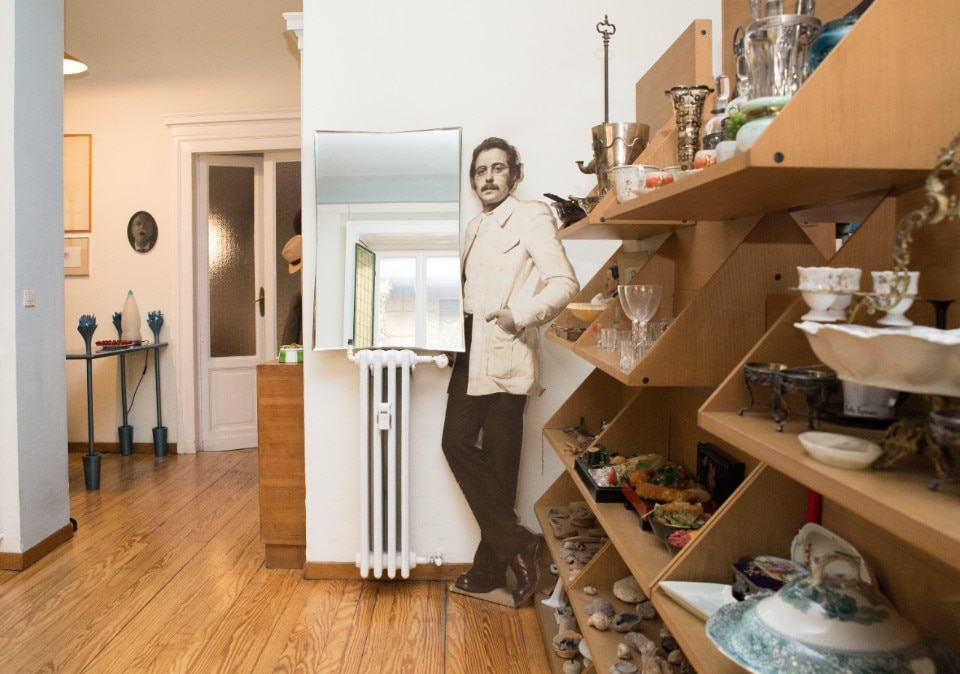
The notion of the fantastic finds its ultimate expression in objects like the “Mobile Bar” by Legend in 1991 or the “Credenza a baldacchino”, also by the Boffi brothers. “In fact, many everyday objects, as well as many works of art, have a high artistic quotient, which I think can be read in two categories: contextuality and spectacularity”.
In the neo-eclectic house, old rituals coexist with the new, embodying “an attitude that fashion was the first to discover” and that La Pietra championed in the context of the home. This revival mirrors the resurgence of figuration, a concept long absent from the world of design since the Art Nouveau era. La Pietra’s intuitive approach takes on a new, lighter, and more ironic form, characterized by elements he describes as “loaded with risk”. These ideas are exemplified in objects he co-created with Bertozzi and Casoni, including a tea set, which takes on a seaside dimension. “Back then, Bertozzi and Casoni were just boys working at the Cooperativa Ceramica d’Imola, yet they possessed extraordinary talent”. Once again, the most traditional objects and techniques meld with innovative projects and change their skin, reopening a dialogue with forgotten images, ultimately breathing new life into figuration. Consider, for instance, the small tables crafted in the early 1980s, which explore their relationship with the natural world.
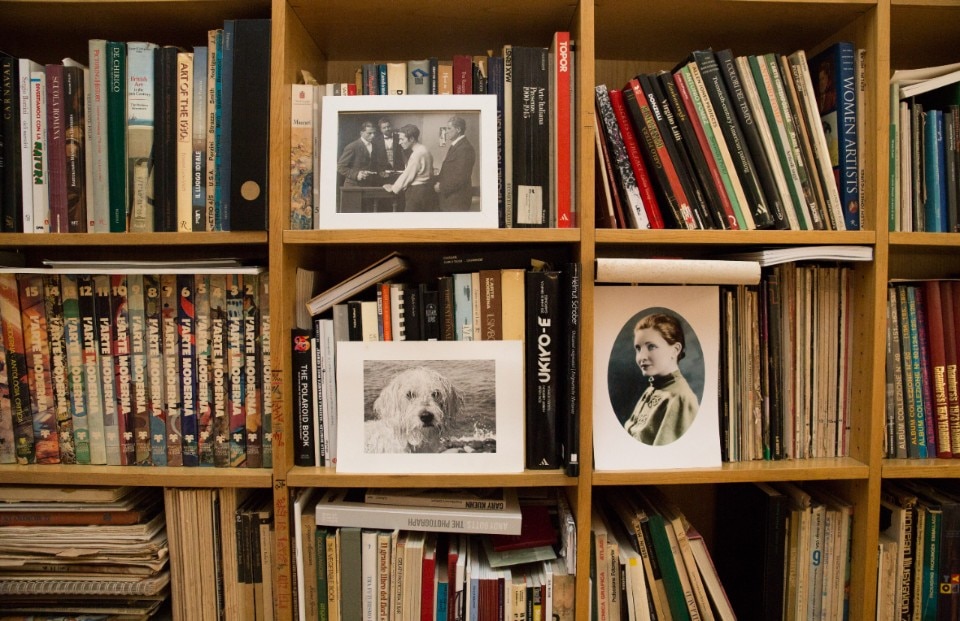
“I have always done a lot, maybe too much. I’ve never stopped questioning human behavior and what they should be considering in research settings: What are people doing on the streets until 4 a.m.? What are they searching for?”
While sidewalks, which should ideally be dedicated to other purposes, are now filled with Dehors for dining, a pressing need remains unmet: the need for recreational activities within the city. “Everyone has realized that our society today wants to have fun and cannot find facilities. This is a monstrous void, and designers, architects, and artists bear responsibility for not addressing it”.
For those who have redefined design through technological innovation and a deeper understanding of human needs, the reconnaissance of the present must always remain an open question. Today, we begin with the assumption that “People don’t enjoy being at home”, despite their connections and technological conveniences.
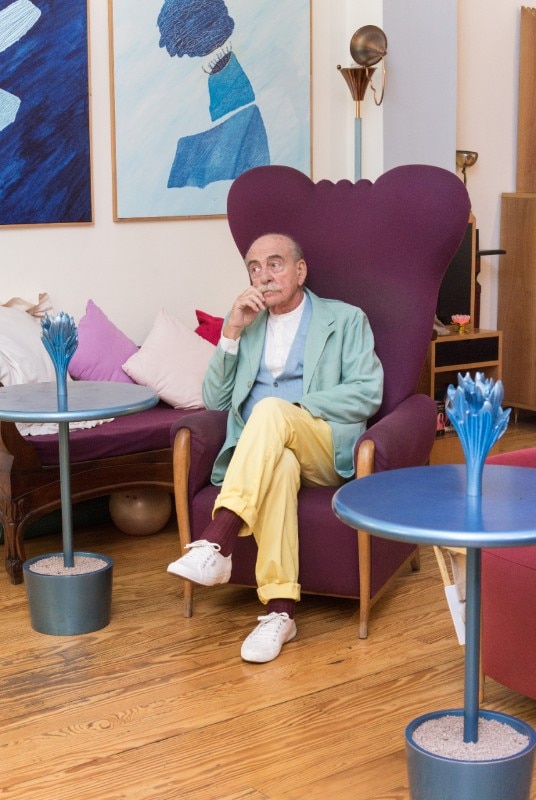
“We live a crowded loneliness”, says La Pietra, “In Milan, 40 percent of the population is single; they spend their time outdoors and do so in a playful manner. However, the playful city does not exist. It was never constructed, nor was it ever conceived”.
And so, a city like Milan, which fails to respond to its needs, or does so without a clear plan or idea, but merely through a consumerist reflex, becomes a “city without morals”, as defined by La Pietra, who lives, observes, thinks, works in this metropolis and has never stopped writing new instructions for living in the city, new itineraries, such as those presented today at the Paula Seegy Gallery, that promote more mindful and creative engagement of its inhabitants in their environment.
These instructions contribute to a reconversion of design, ensuring that citizens are not left to navigate their spaces in isolation. Spaces are not abandoned, devoid of significance, vibrancy, and imaginative responses, resulting in a lack of life.
This notion is beautifully expressed in the poetic presence of the luminous sculpture known as “l’Arcangelo metropolitano”, casting its light upon a corner of the room. This unique lamp is crafted from the adaptation of a lamppost originally conceived in 1977 for the Milan subway, “which has always been anonymous, despite being a city within a city”.
Among these totemic presences, which speak to us of functional adaptation in its highest essence, I see the Maestro speaking in front of his bookcase “Uno sull’altro”, and I wonder what will become of the old concept of the living room. But La Pietra had already provided an answer: “It will likely persist, unchanged – an image of a space not lived in, yet cherished as a reminder of a certain homely ritual”.


